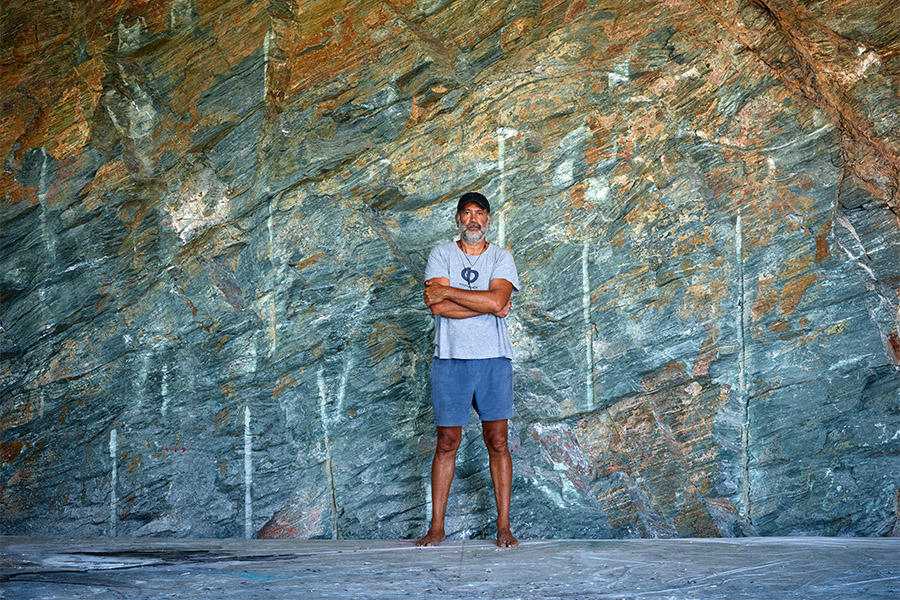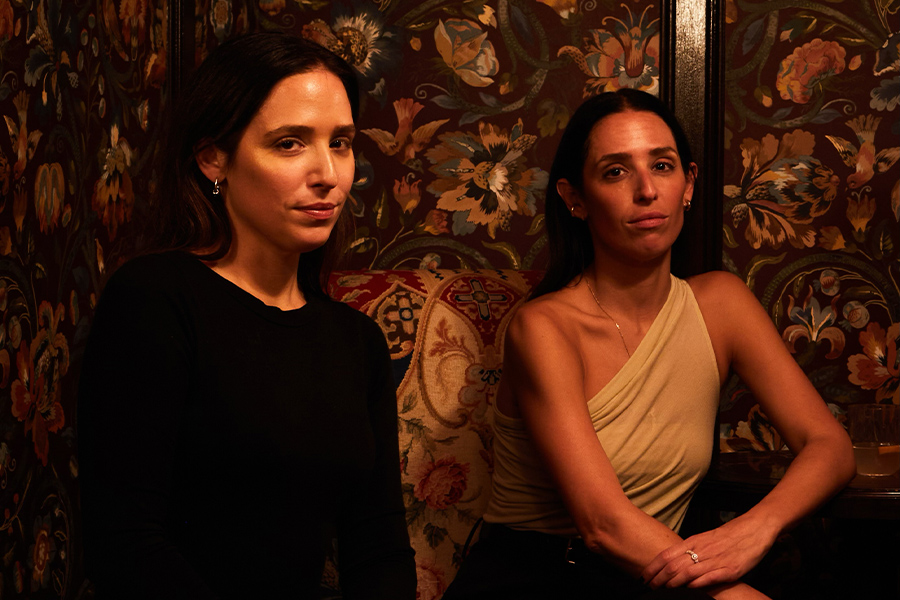As chief creative officer at Auberge Resorts Collection for the last six years, Kemper Hyers has been instrumental in furthering the brand’s style of approachable luxury to create one-of-a-kind hotels, resorts, and residences driven by experiences and unique design. He and his team (and the incredible designers they work with) scour the location for all those details and layers that make all the difference. It comes from his experience with Martha Stewart and hotelier Barry Sternlicht, with whom he spent most of his career, building multiple brands from Sheraton to 1 Hotels.
With 26 properties open and 14 more on the way, he and his team have many more narratives to weave. As he says, “Every place has a wonderful, authentic story to tell, and I like to stay with that truth.” Here, he delves into his journey, what sets Auberge apart, and why he loves his work.
How do you approach luxury?
Kemper Hyers: We attract a curious customer who is looking for discovery and an approachable style of luxury. We take chances, we don’t work from standards, we question everything, and we think about our customers first and foremost. We are empathetic creators of experiences. Design, operations, and brand are combined to create a place where guests feel comfortable, stimulated, and joyful. It’s a balance of provocation and absolute intuitive service.
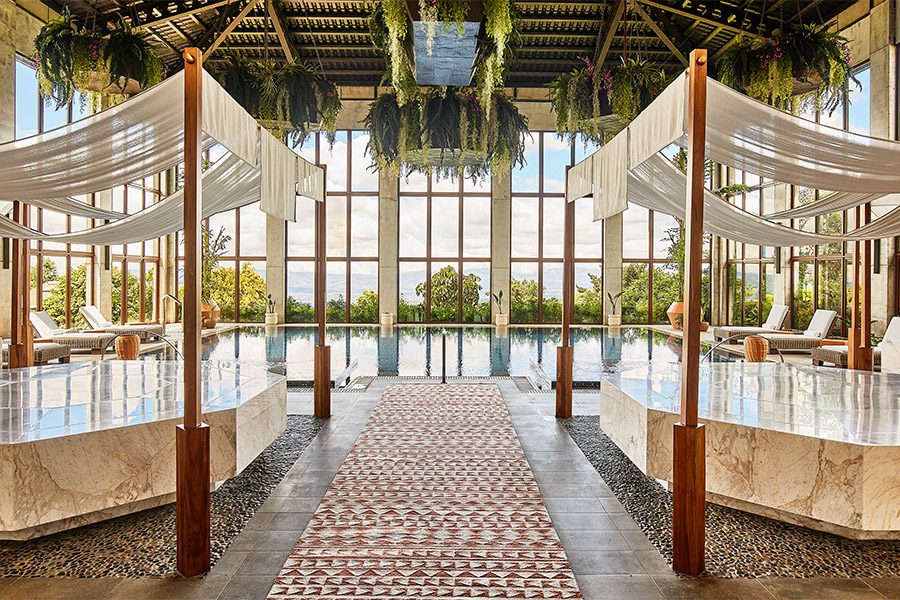
A glass-walled water experience brings the outdoors in at THE WELL at the Hacienda AltaGracia in Costa Rica, designed by Nina Gotlieb
What makes a good Auberge destination?
KH: We only take destinations that have a real spark of a local story to tell, whether that’s an old building, an owner’s dream that we’re bringing to life, or an event or a destination that is wonderfully undiscovered and ready to have their stories told. One of the invaluable pieces of the Auberge story is that our hotels are generally very intimate. As such, we can go into markets long before larger groups can justify being there. It gives our brand this sense of discovery and passion for finding wonderful new places to go.
Auberge is known for crafting location-specific hotels and resorts. How do you ensure this remains the case?
KH: We don’t have traditional standards like every other hotel company. There are only five similarities across properties: the sheets, the towels, the mattress, the pillows, and, yes, my vanity is showing here, the hair dryer. Traditional standards create strong branding but have a diminishing return on providing guests with a truly local taste of the place.
What is your definition of a successful collaboration?
KH: A successful collaboration is where an owner has a passionate vision for a property, an architect is selected to establish the bones of that vision, and an interior designer creates the tension to question and push that premise until it all hums with richness and interesting contradictions. People are naturally contradictory and complex, and we want all our hotels to feel that beautiful complexity. The minute a property feels expected, we believe we have failed. We want our guests to be comfortable and coddled, but impulsively smiling from the richness and layers we add.
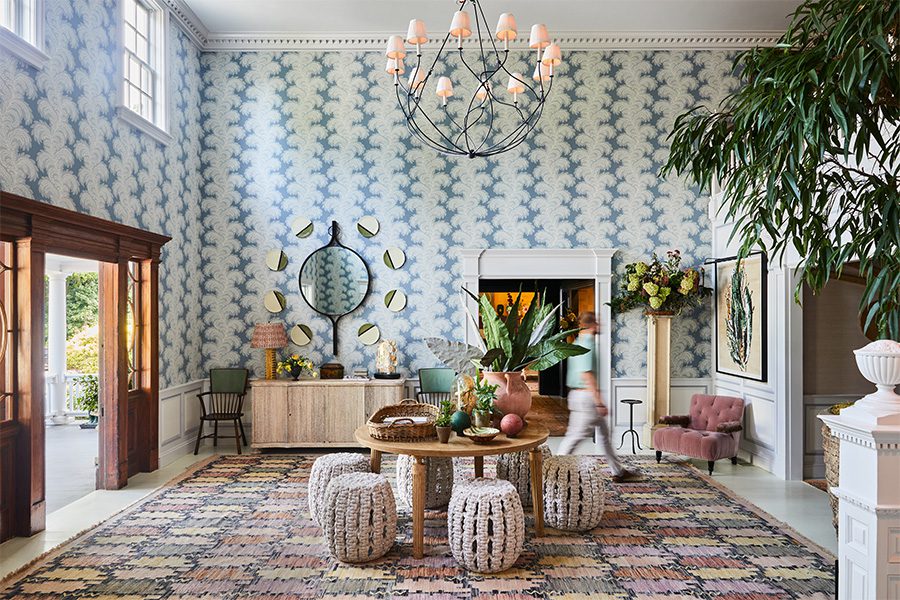
Patterns seamlessly blend at the entrance of the Mayflower Inn & Spa in Washington, Connecticut, revamped by Celerie Kemble
What is your proudest recent accomplishment or project?
KH: That’s a hard one because every ‘tiny’ win is such a point of pride with my team. We have a tack board and a bowl of little pins and map flags. Every time we get a little win, we label the flag with the win and pin it up. We have hundreds of little and big wins that we are so proud of.
Yesterday, I stripped 85 percent of the signs out of a hotel sign package to give the hotel a feeling of being at home. It may sound like nothing, but that decision will completely change the tone of being in that space. Last night, we needed to name our treehouse rooms at Primland. We decided to name them after endangered birds, so this morning we set up a donation structure to contribute a portion of each stay in these rooms to their protection.
Every property we opened during COVID—I believe it was eight hotels—was difficult and my team stepped in to fill every gap. From staying up all night styling the hotels and pricing the merchandise, to tasting and adjusting the food, the music, and the lighting, and all the other millions of little gaps that just couldn’t be filled during those crazy times, they did it all. They deserve the pride.
Tell us one thing people may not know about you?
KH: No one knows that I have always loved the nexus between theater and architecture, and I have an incredible collection of rare toy theaters dating back to the 1700s. I have a room completely dedicated to them—lit, full scenery in place, all in the process of restoration—and I go there late at night and just sit smiling and deeply fulfilled by the tiny moments of drama. That is why I am in this business. I love drama!
Did you think you would end up where you are today?
KH: Definitely not. I was a tap dancer pounding the pavement for gigs and waiting tables, had my own interior design business until I fired all my clients, was a stylist schlepping around New York with shopping bags full of treasures for a decade, designed TV sets when New York had an industry there, and worked with amazing people in retail and catalog creation, from Martha Stewart to Crate & Barrel’s cofounder Gordon Segal, who let me redesign catalogs with scotch tape, scissors, and a copy machine.
I serendipitously met Barry Sternlicht, and through a very unique lens, came to know this business. His lens and his insatiable need to disrupt (long before anyone used that word pridefully) the industry made me who I am. And now, our CEO Craig Reid and the team at Auberge have made that lens much richer.
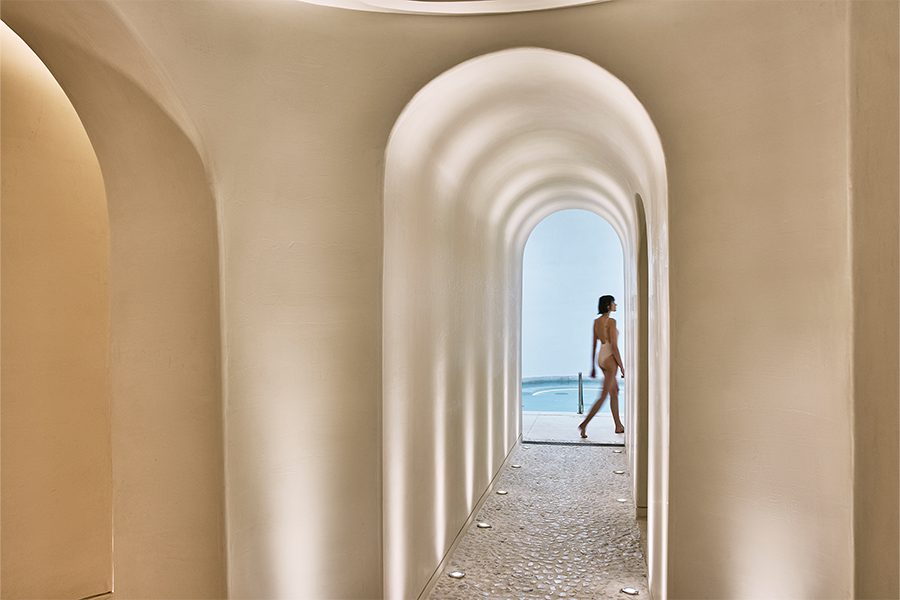
A series of arches leads guests to the pool at Etéreo on Mexico’s Riviera Maya, designed by Meyer Davis
You worked with Barry Sternlicht for most of your career. What did he teach you?
KH: There are days when I feel like I spent my whole life with Barry. He was fundamental to who I am as a creative director. Barry encouraged me to hire talent new to the industry, to design for comfort, to understand hotels are a business, and to look for the right opportunities to spend. He taught me to bring in talented partners anytime you can, that retail matters, to put style first in everything, and to never drift from the big idea once you’ve determined your story. Also, never use orange shag carpeting!
What did you learn from Martha Stewart?
KH: Martha is a classy, very smart, funny, and self-made lady. I have the utmost respect for her. She is exacting and can see quality from 100 miles away. She taught me what an edited, beautiful world could look like. Most importantly, she is a teacher. At its most distilled, our content was about sharing knowledge that allowed people to live their best lives. That’s a really beautiful thing.
Biggest challenge for you today?
KH: Never repeating! We are a one-of-kind collection of 26 unique hotels, and I am so committed to that. We opened six hotels in the last 12 months and even the coffee service in the room was 100 percent different in all six. A non-standard-driven brand is where I thrive.
Why do you love what you do?
KH: I am doing the one thing I inherently know how to do. It’s a natural habitat where I feel completely fulfilled. I get to wake up every day and drive the creation of places where people will make some of the most beautiful memories of their lives. I feel a real responsibility to that and love the creative process it takes to get there.
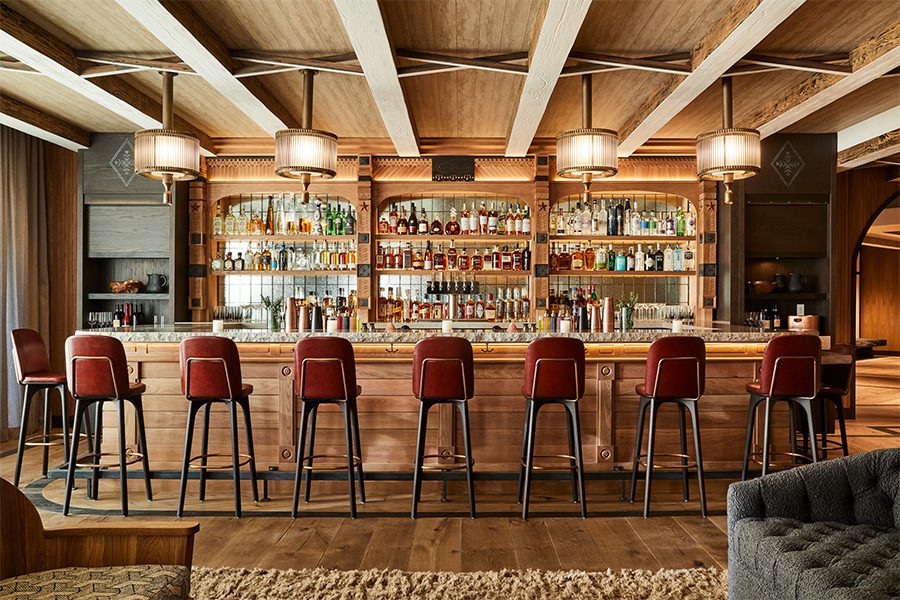
The Timber Room at the Rose Ink Workshop-designed Madeline Hotel & Residences in Telluride, Colorado, reimaigines cozy mountain hideaways
This article originally appeared in HD’s May/June 2023 issue.

